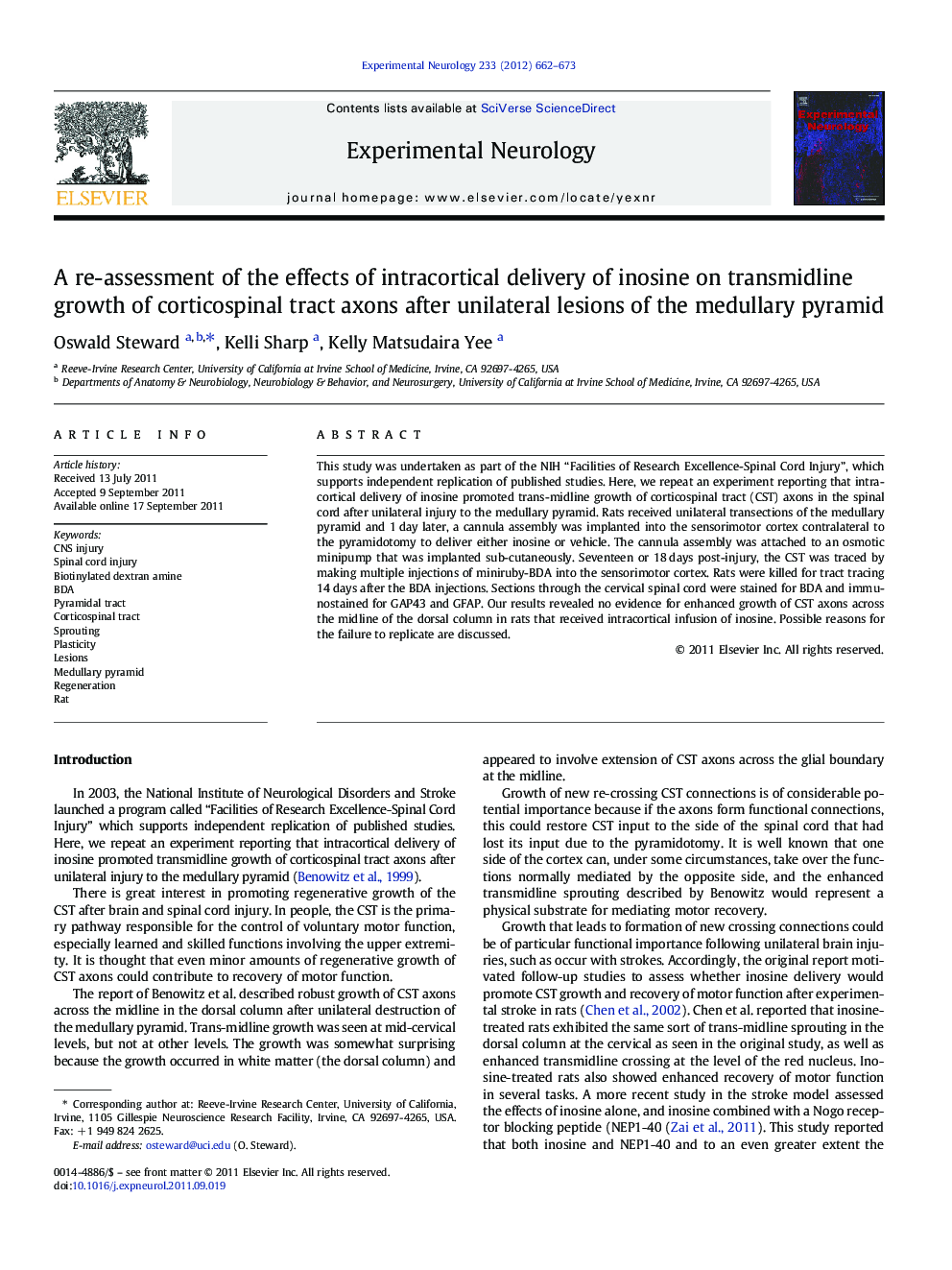| کد مقاله | کد نشریه | سال انتشار | مقاله انگلیسی | نسخه تمام متن |
|---|---|---|---|---|
| 6018976 | 1186531 | 2012 | 12 صفحه PDF | دانلود رایگان |

This study was undertaken as part of the NIH “Facilities of Research Excellence-Spinal Cord Injury”, which supports independent replication of published studies. Here, we repeat an experiment reporting that intracortical delivery of inosine promoted trans-midline growth of corticospinal tract (CST) axons in the spinal cord after unilateral injury to the medullary pyramid. Rats received unilateral transections of the medullary pyramid and 1Â day later, a cannula assembly was implanted into the sensorimotor cortex contralateral to the pyramidotomy to deliver either inosine or vehicle. The cannula assembly was attached to an osmotic minipump that was implanted sub-cutaneously. Seventeen or 18Â days post-injury, the CST was traced by making multiple injections of miniruby-BDA into the sensorimotor cortex. Rats were killed for tract tracing 14Â days after the BDA injections. Sections through the cervical spinal cord were stained for BDA and immunostained for GAP43 and GFAP. Our results revealed no evidence for enhanced growth of CST axons across the midline of the dorsal column in rats that received intracortical infusion of inosine. Possible reasons for the failure to replicate are discussed.
Journal: Experimental Neurology - Volume 233, Issue 2, February 2012, Pages 662-673